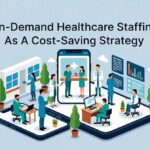When it comes to maintaining our health, primary care is often the first line of defense. A symphony of factors, from lifestyle adjustments to medical interventions such as preventative medicine, come together in this crucial arena.
But let’s zero in on one particular section of the orchestra – medications. They often play a dual role, acting as both guardians against illness and as essential tools for those already navigating the path of a chronic condition.
Understanding Preventive Care and Medication’s Place
It’s a no-brainer that stopping health issues before they start is a smart move. Vaccinations, for instance, arm the immune system against invaders, and are a prime example of medications in preventive care.
Doctors may also prescribe medications as a proactive measure against potential health challenges, especially for individuals with a higher risk of certain diseases. Through these measures, medications become an integral part of keeping future ailments at bay and setting the stage for sustained wellness.
Moreover, essential screenings and regular monitoring can unearth problems before they escalate, integrating medication into preventive care. Such proactive measures can include blood pressure medications to thwart hypertension or cholesterol-lowering drugs to prevent heart disease.
These methods are a testament to the belief that an ounce of prevention is worth a pound of cure, with medications offering that crucial preventative edge.
The Integral Role of Medication in Chronic Disease Management
When chronic conditions enter the stage, they demand a spotlight. Medication becomes a critical co-performer alongside diet and exercise in the chronic disease management routine.
Striking the right balance between effective dosages and manageable side effects can be a delicate dance – but one that’s necessary for keeping the rhythm of daily life as normal as possible. Patient education plays a pivotal role in this scenario, empowering individuals to become active participants in maneuvering through their treatment plans.
Medication Adherence and Its Impact on Wellness
Adherence is a buzzword in the healthcare lexicon, but what does it really mean for the average person? Simply put, sticking to the prescribed medication regimen can be a game-changer in the quest for health.
Unfortunately, real life often throws obstacles in the way. From forgetting doses to dealing with side effects, there are myriad reasons why sticking to the script can be tough. Understanding and overcoming these barriers is key to ensuring that medications can do their job effectively.
The Evolving Landscape of Medication in Primary Care
The medical field is dynamic, with advancements occurring at a breakneck pace. New medications continually emerge, promising better outcomes for patients.
For primary care, staying abreast of these changes is crucial. It goes beyond just the new; sometimes, the repurposing of existing medications can provide new solutions to old problems. Navigating this landscape requires an eye for both innovation and practicality, ensuring that care remains top-notch while staying grounded in reality.
Collaboration Between Patients and Healthcare Providers
The relationship between patients and healthcare providers is the cornerstone of effective primary care. Medications are at their most beneficial when this partnership is based on trust, communication and mutual understanding.
Personalized care plans that take into account the patient’s unique medical history and lifestyle preferences are essential. Through this collaboration, patients are not just recipients of care; they’re active contributors to their own wellness journey.
Treading the path of healthcare, especially where medications are involved, requires a clear map and a shared effort. Primary care serves not just as a navigator but as a partner every step of the way, blending the science of medicine with the art of personal care.
Balancing the power of medications with the goals of wellness ultimately leads to a harmony where patients don’t just survive but thrive.
Did you find this helpful? Check out our other helpful articles on our website.
Read Also
- Creative Approaches to Alleviating Healthcare Staff ShortagesHospitals and clinics are facing staff shortages, which makes it harder to take care of patients well. Finding simple and useful solutions is very important. Easy changes like flexible work hours, good training, and chances to grow can help staff stay happy. Technology, like online doctor visits and helpful tools, can make work easier. Smart… Read more: Creative Approaches to Alleviating Healthcare Staff Shortages
- Understanding the Role of Sterilizers in Healthcare FacilitiesHave you ever wondered how hospitals keep their equipment safe enough to use on dozens of patients every day? Most people never think about what happens behind the scenes, yet these hidden steps play a huge role in patient safety. Sterilizers are part of that system, working quietly to remove harmful germs before any instrument… Read more: Understanding the Role of Sterilizers in Healthcare Facilities
- Building Healthcare Access Where It’s Needed Most: A Local First ApproachHealthcare shouldn’t depend on where you live. But in the U.S., it often does. If you’re in a big city, you likely have options. If you’re in a small town or an underserved neighbourhood, it’s a different story. To fix this, more healthcare leaders are turning to a local-first approach. That means putting clinics and… Read more: Building Healthcare Access Where It’s Needed Most: A Local First Approach
- Revolutionizing Patient Engagement: Innovative Solutions for Improved Care and Treatment SuccessNavigating healthcare system can often feel overwhelming for patients. Between appointments, prescriptions, and treatment regimens, it’s easy for crucial details to get lost in the shuffle. That’s why effective patient engagement and support solutions are more important than ever. Companies like Serva Health, with their pharma hub services, are stepping up to ensure that patients… Read more: Revolutionizing Patient Engagement: Innovative Solutions for Improved Care and Treatment Success
- On-Demand Healthcare Staffing As A Cost-Saving StrategyThis is an exciting and challenging time for the healthcare industry. Technology is advancing almost faster than humans can keep pace. New legislation is creating fresh challenges for the future of healthcare, and the shifting population demographic continues to place more pressure on healthcare facilities. Amidst these changes, healthcare facilities are facing a critical staffing… Read more: On-Demand Healthcare Staffing As A Cost-Saving Strategy
- The Benefits of Contract Labor Staffing in HealthcareThe most successful healthcare facilities today aren’t just reacting to crises—they are building workforce resilience to withstand them. Unpredictable patient demand, coupled with persistent nursing shortages, has made the traditional staffing model obsolete. Relying on mandatory overtime to cover a sudden surge in capacity is a recipe for high turnover and rising employee burnout relief… Read more: The Benefits of Contract Labor Staffing in Healthcare
- Management Reinforcement for Healthcare Providers in a Shifting SystemHealthcare is changing faster than ever. So, providers are feeling the pressure to keep up. New technology, changing patient needs, and constant rule updates make it tough for managers to stay on top. Strong leadership helps teams work better, give great care, and stay happy in their jobs. Here’s how healthcare leaders can strengthen their… Read more: Management Reinforcement for Healthcare Providers in a Shifting System
- Why Effective Disinfection Remains the Foundation of Public HealthFrom hospitals and schools to transport hubs and food production sites, disinfection is central to breaking the chain of infection and protecting community health. The COVID-19 pandemic highlighted how crucial surface hygiene and environmental control are in reducing the spread of harmful microorganisms. Yet, beyond emergency response, routine and validated disinfection practices remain the cornerstone… Read more: Why Effective Disinfection Remains the Foundation of Public Health









